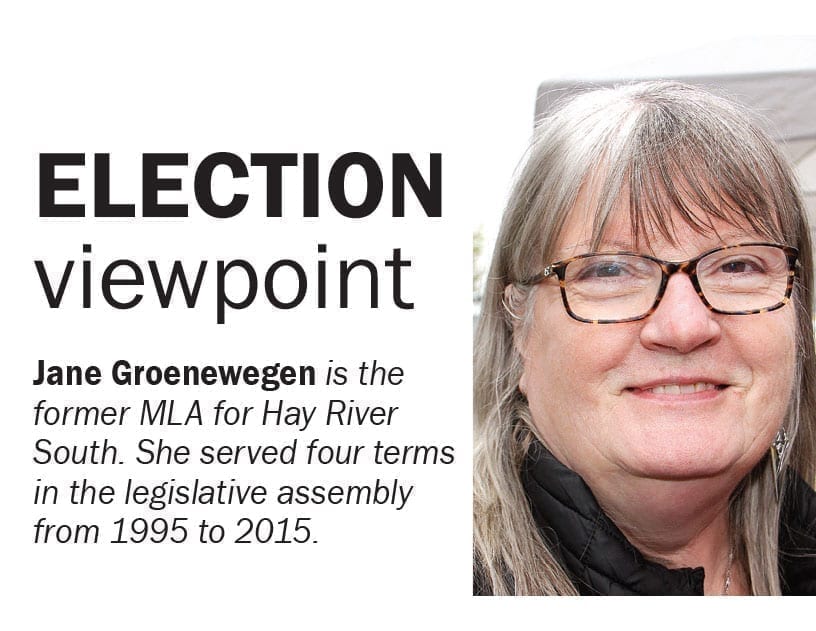Editor's note: Jane Groenewegen was asked by NNSL media to provide a perspective on consensus government in the lead up the territorial government.
 Let’s start by talking a little about the shortfalls of consensus government.
Let’s start by talking a little about the shortfalls of consensus government.
The theory is that association with a party will bring together a group of would-be elected leaders of like mindedness on matters of political ideology, priorities and agenda.
And this would facilitate the implementation of that agenda while allowing voters to make choices based on expectations related to that platform.
And maybe in larger jurisdictions this is the only manageable way of conducting the business of governing.
The failure of partisan politics, in the opinion of someone who has lived only in the NWT since being of voting age, is the energy wasted in being adversarial, seemingly often for the sake of being adversarial. It is very counterproductive and not what most voters support.
But in small jurisdictions like ours, where it’s entirely possible to know most, or at least many constituents personally, affiliation with a party isn’t necessary.
Consensus government, although not without its own drawbacks, allows for the flexibility of opposing or supporting initiatives and decisions at the discretion of individual members in frequent consultation with constituents.
And although we don’t enter the Legislative Assembly with party affiliation, it doesn’t take long before informal alliances begin to emerge based on perspectives about things such as social agenda, transparency, the environment, decentralization, intergovernmental partnerships, etc.
Where consensus government makes a major departure from pure consensus and takes on something akin to a hybrid between partisan and consensus government is when a cabinet elected by the members becomes the “governing minority party” and the regular members become the “official opposition.”
A major difference being that the “opposition” can actually support what’s being proposed by the cabinet on a case by case basis, and have meaningful input into what is being proposed through a committee process which grants full disclosure in advance. (At least in theory, if not always in reality).
That meaningful input could be questioned in cases where ministers resist the messy business of fulsome consultation with regular members and threatens to derail or delay their agenda.
And while solidarity is a required feature of the cabinet, maintaining a cohesive regular members caucus is an entirely different matter and challenge, as I can attest to, having been the chair of the regular members caucus for a four year term.
If consensus government is to operate the way it was intended, regular members have to be respected and valued for what they have to bring to the process of governing.
Without that the accountability of all members is decreased and cabinet can gain a majority by appealing to and appeasing a few members of the “other side.”
As a consensus style of government, our jurisdiction is still required to interact with federal, provincial and territorial counterparts, so the notion of ministerial portfolios and the accompanying authority bodes well for that activity.
But back at home, that role can be revoked and given to someone else with the stroke of a couple motions introduced and voted on in a day.
One only needs to observe the people participating in antics of party politics to believe that consensus government for our territory is still a better way to govern.
But ... The current system could improve and evolve to address some of the flaws and drawbacks if there were a vision and will to do that.
I would gladly bring my 20 years of experience and observations in the legislative assembly to a discussion to that end.